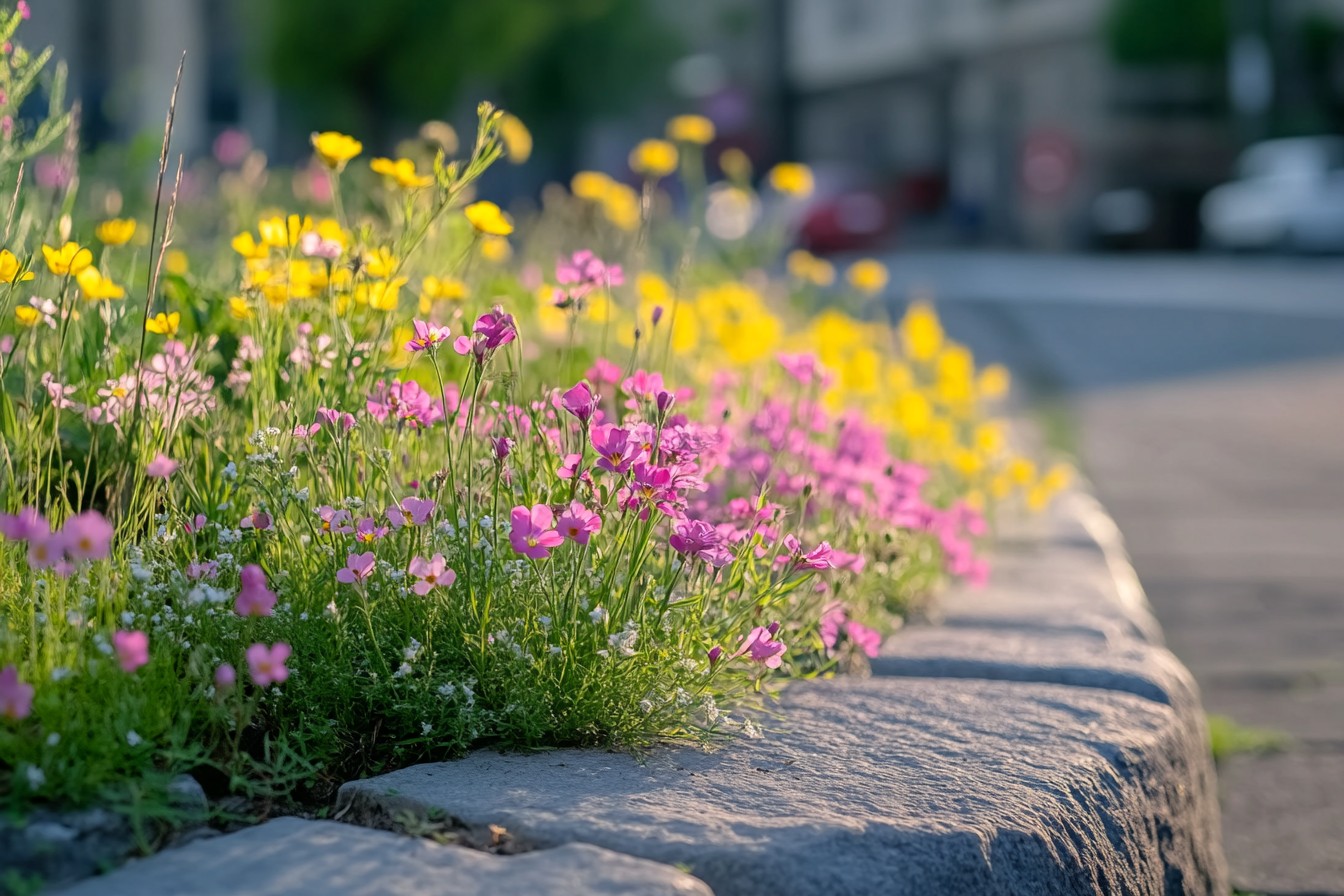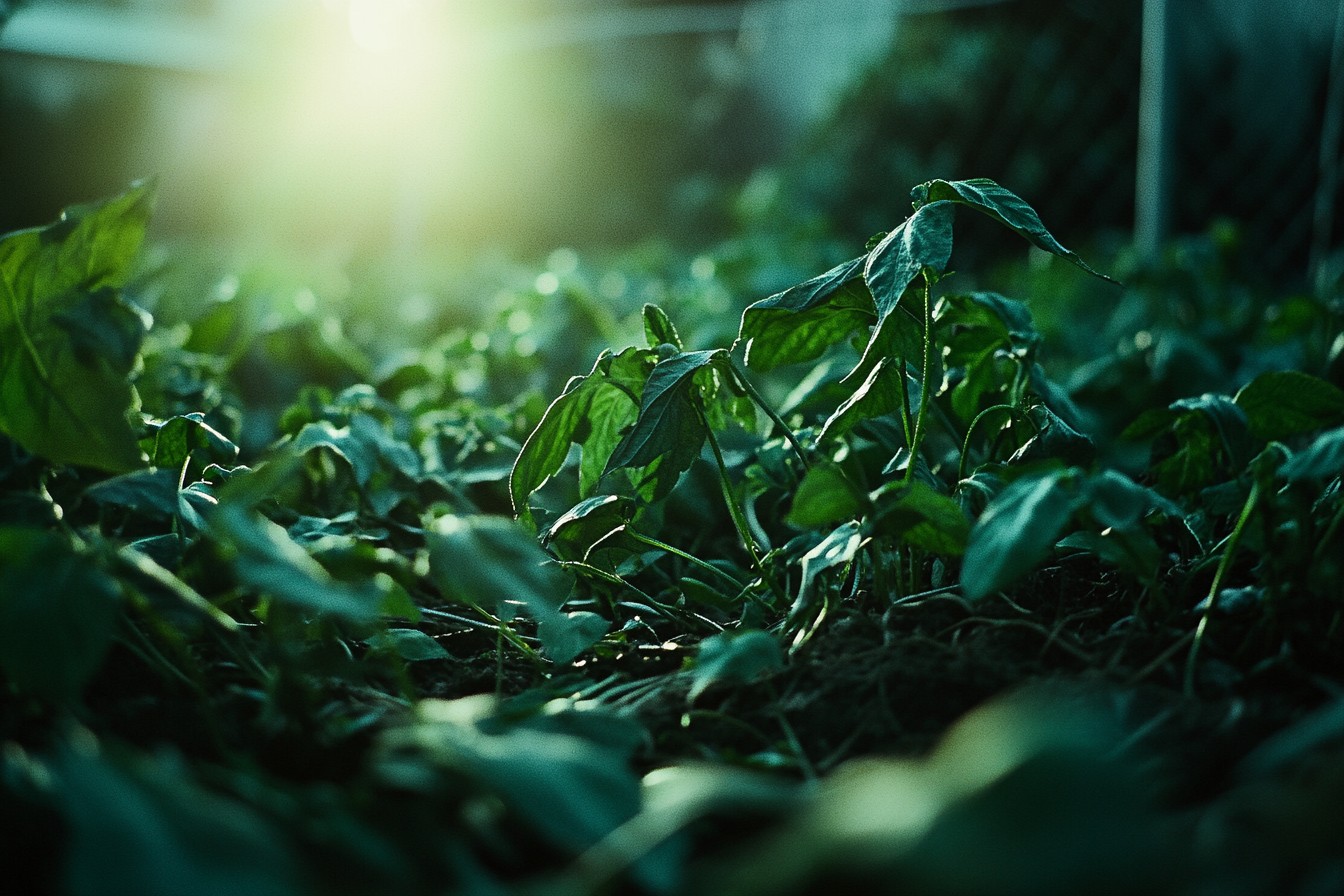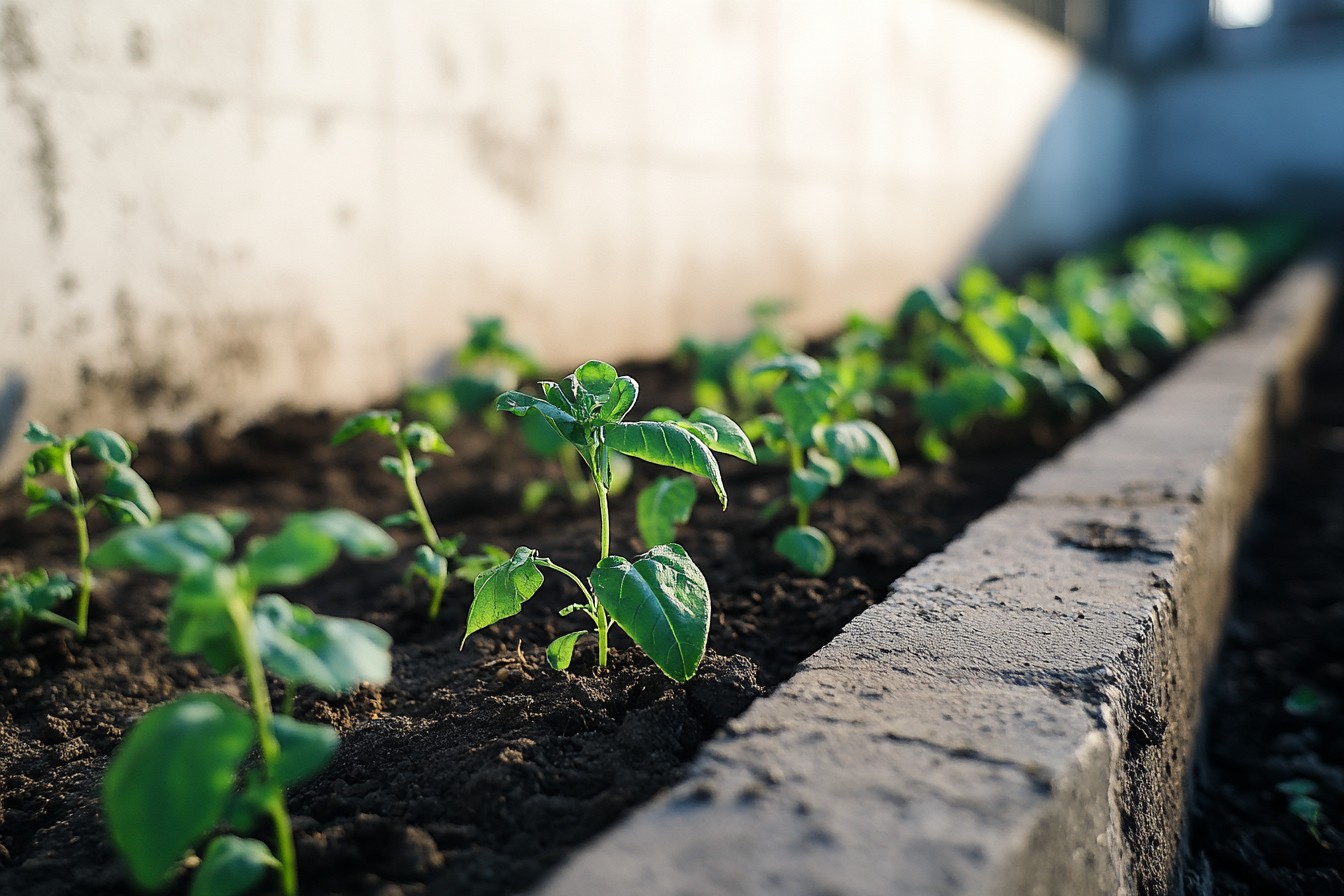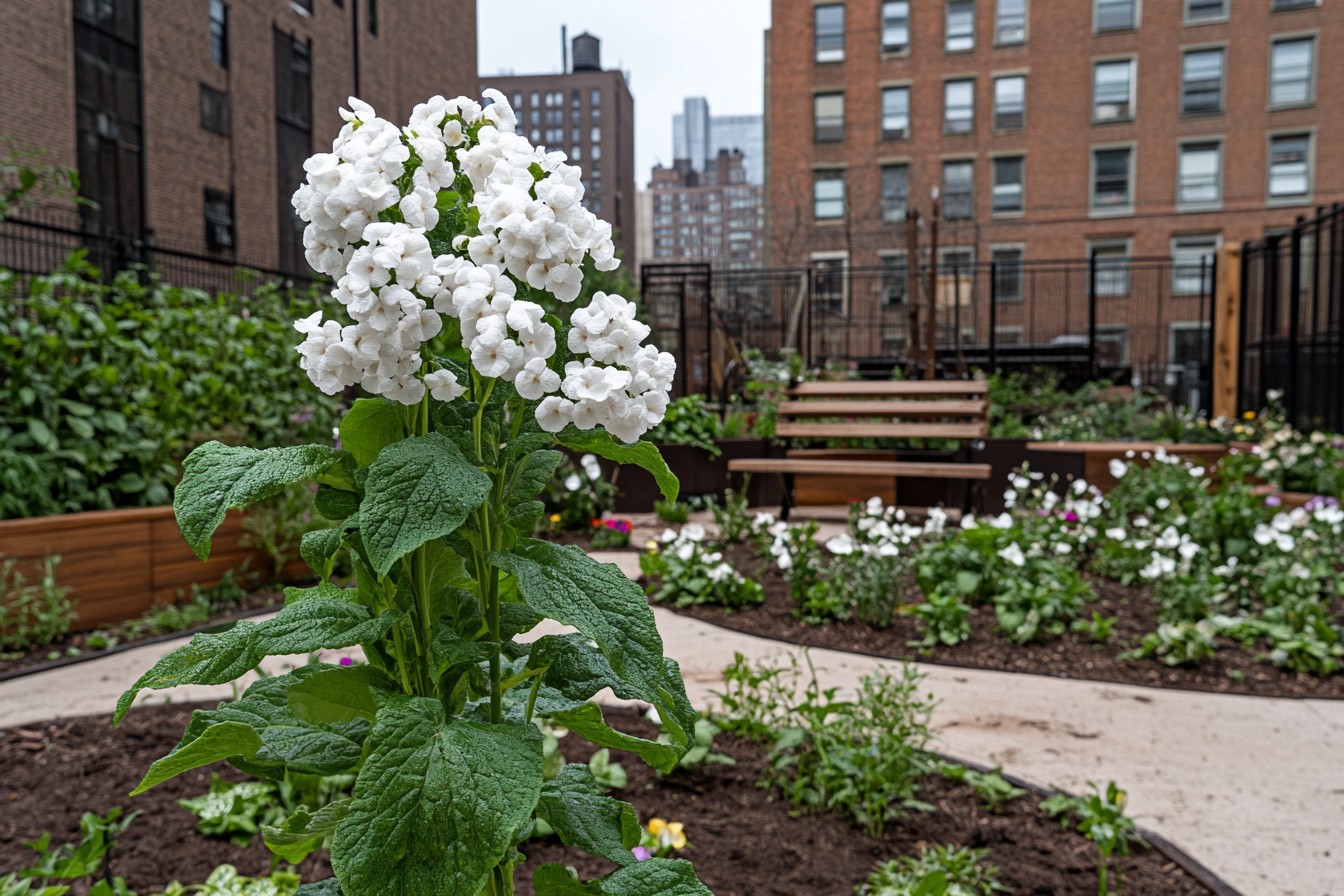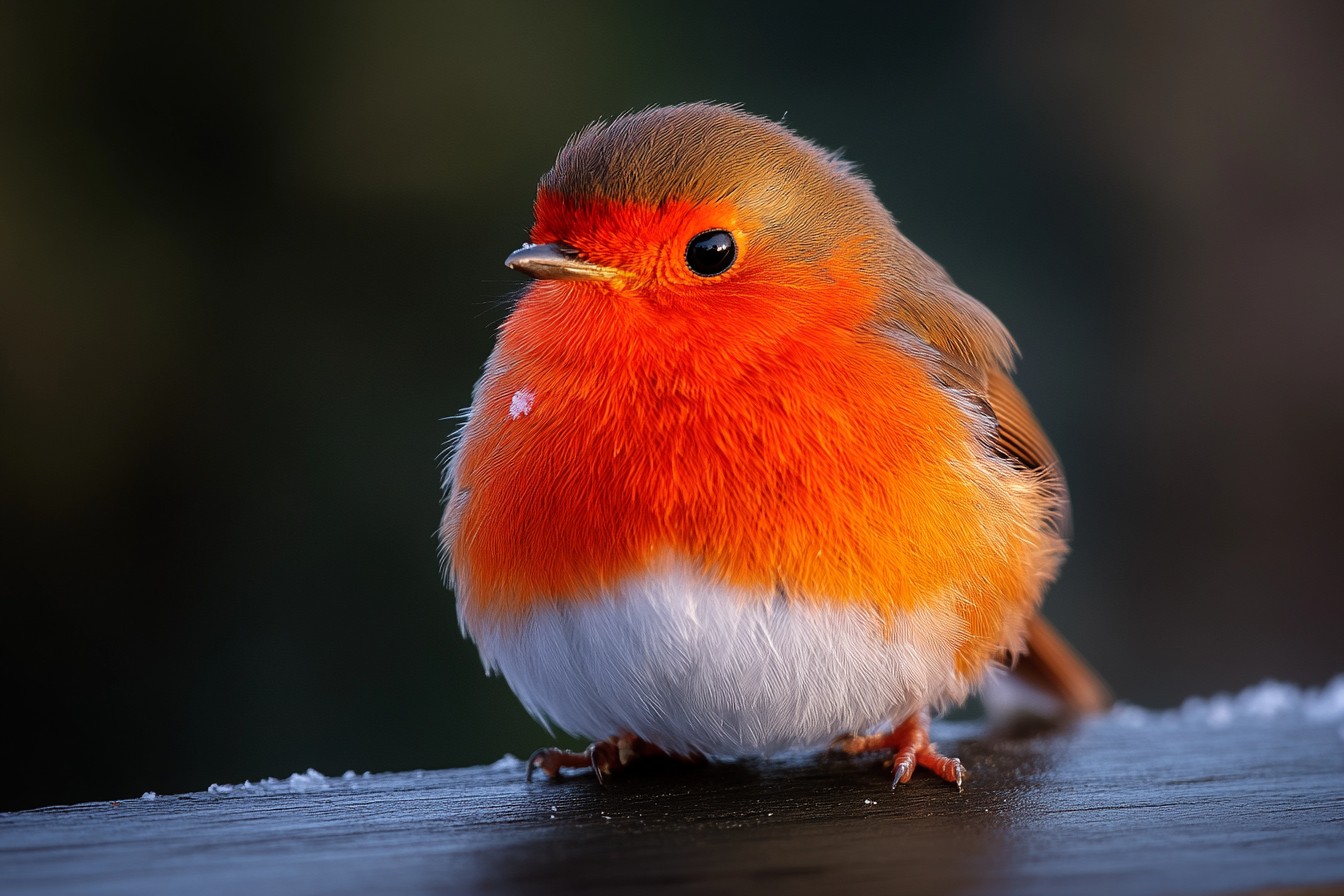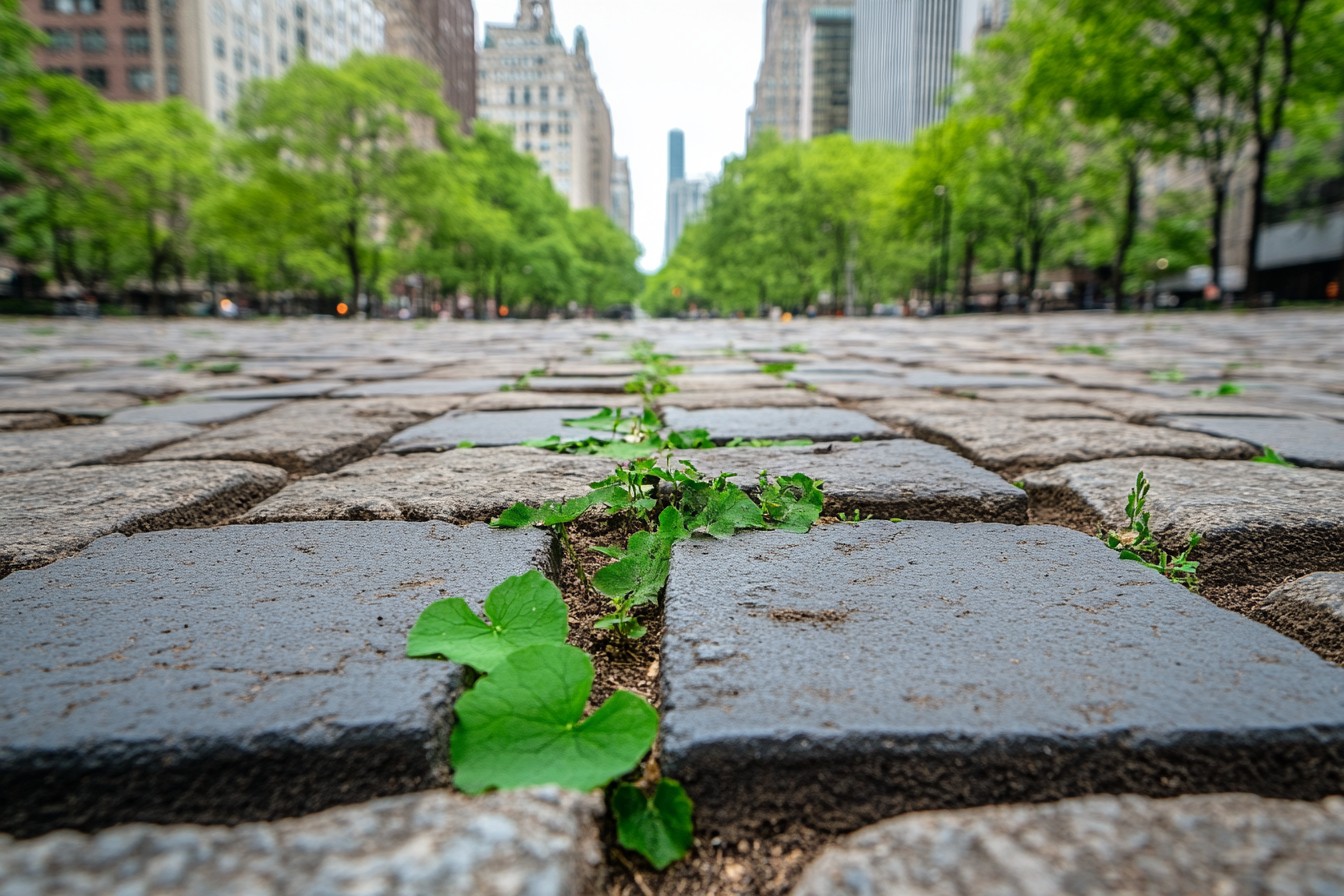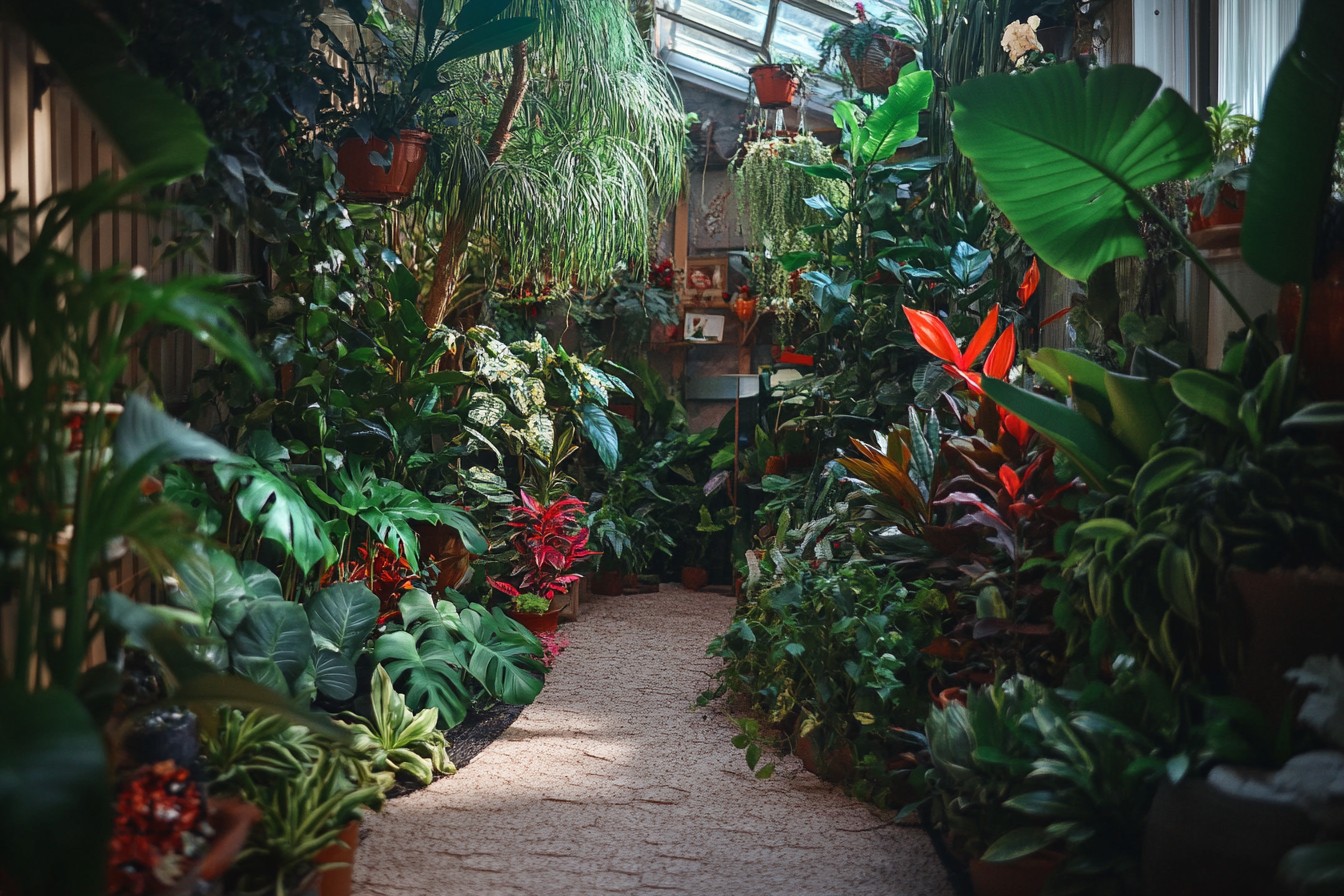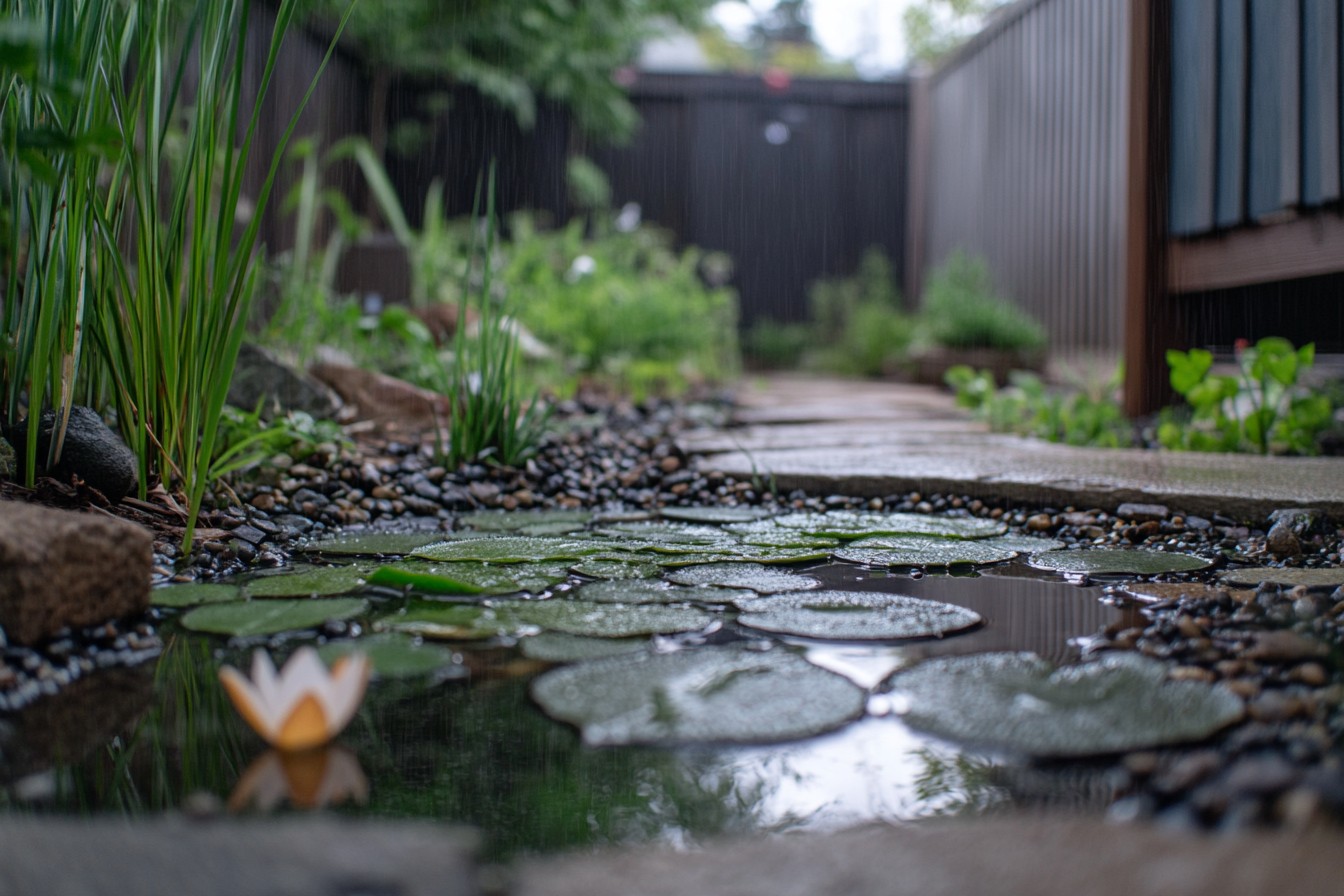The breaking point came when I realized I hadn’t seen a butterfly in my garden for two years. TWO YEARS. I was standing in what I’d thought was a perfectly respectable urban garden—raised beds full of vegetables, a small patch of lawn, some ornamental shrubs along the fence—when it hit me that I’d created the suburban equivalent of a desert.
Sure, it was green, but it might as well have been plastic plants for all the wildlife it supported. The only regular visitors were the neighbor’s cat (whose primary interest was using my carefully raked soil as a luxury litter box) and exactly one incredibly persistent squirrel with a vendetta against my bird feeder. Something wasn’t right.
I grew up in a household where even our tiny yard buzzed with life—bees fumbling drunkenly around my mom’s coneflowers, goldfinches bickering over sunflower seeds, even the occasional garter snake sunning itself on the garden path. By comparison, my adult garden was like the world’s most boring nature documentary. “Here we observe the empty bird bath, still empty, for the fifth consecutive week.”
This realization kicked off what my girlfriend now refers to as my “wildlife midlife crisis,” a two-year transformation of our modest urban lot from sterile green space to certified wildlife habitat teeming with life.
The journey involved more research than my college thesis, several spectacular failures, an unexpected war with the neighborhood HOA, and ultimately the most satisfying gardening experience of my life. It started with a comprehensive inventory of what I actually had. Turned out, not much.
My 1/8-acre lot boasted a patchy lawn, two non-native ornamental trees (Bradford pears, which I’ve since learned are ecological disasters), some random foundation shrubs chosen purely for being “low maintenance,” and my vegetable garden. There was exactly one native plant—a self-seeded common milkweed that had somehow survived my previous attempts at yard “tidying” and was hiding behind the garage. My first impulse was to rip everything out and start fresh, but my budget (and my girlfriend’s insistence that scorched-earth gardening wasn’t a sustainable approach) pushed me toward a more gradual transformation.
I developed a three-year plan with clear goals: increase native plant percentage to at least 70%, establish year-round water sources, create diverse habitat layers, eliminate chemical inputs, and document changes in wildlife visitors. The first step was actually a step back—I needed to stop doing certain things before starting new ones. I immediately halted all synthetic fertilizer and pesticide use.
The lawn service was fired (not without drama—the guy seemed personally offended, as if I’d rejected not just his services but his entire worldview). The weekend soundtrack of gas-powered equipment fell silent. For two weeks, I just observed, trying to establish a baseline of what wildlife actually visited, if any.
The results were depressing. Bird species: house sparrows and starlings, exactly the non-native species you’d expect in a disturbed urban environment. Insects: plenty of mosquitoes, some houseflies, and exactly two species of butterfly—cabbage whites and skippers.
Mammals: squirrel enemy #1 and the neighbor’s cat. That was it. Two years of conventional gardening had created a green space that was essentially a wildlife food desert.
Phase one of the transformation focused on the easiest, highest-impact changes. First came water sources—I installed a simple bird bath with a solar bubbler to keep water moving (still water quickly becomes mosquito daycare). To this, I added three ground-level water sources: a shallow dish with pebbles for insects and a small in-ground pond (really more of a puddle with aspirations) in a shady corner.
The transformation was almost immediate—within days, robins and house finches were regular visitors to the bird bath. Next, I tackled the easiest habitat layer—the ground. I stopped bagging fallen leaves, instead creating brush piles in discreet corners of the yard and using shredded leaves as mulch in planting beds.
This simple change—literally just being lazier about yard “cleanup”—had a remarkable effect. Within weeks, I spotted my first towhee scratching through leaf litter, and countless beneficial insects took up residence in the brush piles. The plant transformation began with what I called my “poncho method”—draping sheets of cardboard and old painter’s tarps over sections of lawn, weighing them down with stones, and leaving them for 6-8 weeks to kill the grass beneath.
As each section was cleared, I replaced it with native plant communities suitable for my region. I focused initially on keystone species—plants that support a disproportionate amount of wildlife—using research from the National Wildlife Federation and local extension offices to guide my choices. The first converted area became my “butterfly highway”—a 3-foot-wide border along the fence line packed with native milkweed, asters, goldenrod, and ironweed.
I deliberately overcrowded them, partly from impatience but mostly because I’d read that densely planted natives create better habitat by offering more shelter and making it easier for creatures to move from plant to plant without exposing themselves to predators. I assumed it would take at least a year to see results from the plantings. Nature had other plans.
By late summer, just months after planting, the butterfly highway hosted five species of butterfly, including my first-ever monarch sighting in the garden. I spotted caterpillars munching contentedly on milkweed leaves, and the constant buzz of native bees created a background soundtrack I hadn’t even realized was missing from my previous garden. The shrub layer came next.
I systematically replaced the non-native foundation plants with natives like Virginia sweetspire, arrowwood viburnum, and American beautyberry. The transformation here was slower, as woody plants take time to establish, but by year two, these shrubs were butterfly and bird magnets. The beautyberry, in particular, created quite a spectacle when its bright purple berries attracted a flock of cedar waxwings that stripped it bare in a single afternoon.
The tree situation presented the biggest challenge—and some unexpected controversy. Those Bradford pears weren’t just ecological wastelands; they were actively harmful, invasive, and structurally unsound. But they were also the only substantial shade in the yard.
After much deliberation (and saving up), I bit the bullet and hired professionals to remove them, replacing them with a native redbud and a serviceberry. This is where the HOA drama began. Apparently, removing “perfectly good trees” (their words, not mine) and replacing them with “messy, weedy-looking plants” (again, their charming phrasing) violated the neighborhood aesthetic standards.
The fact that my front yard was evolving from tidy but sterile to slightly less tidy but ecologically valuable did not impress the committee. After several increasingly passive-aggressive notices, I found myself at a monthly HOA meeting, armed with PowerPoint slides about declining insect populations and the critical role of native plants in urban ecosystems. I’d like to say I changed their minds with my passionate presentation.
What actually happened is that my elderly neighbor, Mrs. Abernathy, unexpectedly came to my defense, announcing that she’d seen her first hummingbird in 15 years at my “lovely natural garden” and that perhaps the committee should worry less about plant height and more about the “chemical soup” other residents were spraying on their lawns. Coming from a 30-year resident with immaculately kept roses, this carried weight.
The compromise: I would keep a 3-foot mowed buffer along sidewalks and driveways, and they would amend the guidelines to allow native plant gardens if they were “intentionally designed and maintained.”
By the middle of year two, the transformation was well underway. The remaining lawn had shrunk to about 30% of the yard—just enough for the dog to do his business and for the occasional sprawling summer picnic. The rest was a patchwork of native plant communities: a rain garden capturing runoff from the roof, sunny pollinator patches, shade gardens under the new trees, and vegetable beds interplanted with native flowers to attract beneficial insects.
The maintenance rhythm shifted dramatically. Instead of the weekly mow-blow-go routine, I spent maybe an hour per week on actual maintenance—spot-checking for truly problematic weeds (as opposed to beneficial volunteers), refreshing mulch in pathways, and monitoring plant health. The garden had developed a certain self-sufficiency; the dense plantings naturally suppressed weeds, and the emerging ecosystem began to regulate many pest issues without my intervention.
The most remarkable change was the explosion of life. I started keeping a wildlife journal, documenting each new species I observed. By the end of year two, the tally was impressive: 27 bird species (up from 2), 18 butterfly species (up from 2), countless native bees and beneficial insects, three species of lizards, two types of frogs, and even a visiting opossum that took up temporary residence under the deck.
Some of the transformations were spectacularly visible—like the spring morning I counted 17 monarch butterflies on the milkweed patch, or the afternoon I spotted five different bird species taking turns at the bath. Others were more subtle but equally significant, like the steady increase in fireflies each summer evening or the gradual disappearance of mosquitoes as predator populations became established. The vegetable garden, interestingly, became more productive despite my concerns that wildlife might damage crops.
The increased pollinator presence led to better fruit set on tomatoes and squash, while the ecosystem balance meant fewer destructive pests. Sure, I lost a few strawberries to birds, but the overall gains far outweighed these small taxes. Not everything worked as planned.
My first attempt at a small pond was a disaster—I didn’t understand proper water circulation and ended up with a smelly, algae-filled mess that attracted more mosquitoes than wildlife. The solution came from adding more native marginal plants to filter the water and investing in a small solar pump to keep it moving. Lesson learned: water features require research, not just enthusiasm.
My attempt to establish a meadow area with native grasses was also a struggle. The first seeding was promptly eaten by birds (I should have expected that), and the second fell victim to a two-week downpour that washed away half the seeds. The third attempt finally took hold, but not before teaching me that patience isn’t just a virtue in wildlife gardening—it’s a necessity.
By far the biggest surprise was how the garden changed my own relationship with outdoor space. Before, I’d seen the yard as something to be controlled and managed, a green backdrop for human activity. The wildlife transformation flipped this perspective entirely.
Now, the garden feels like a collaboration between my design intentions and nature’s own momentum. I’ve learned to appreciate the unexpected—like when evening primrose showed up completely unbidden (likely via bird deposit) and established itself in a perfect spot I never would have chosen. The garden has become a place of discovery rather than control.
Each morning brings the possibility of something new—a bird I haven’t seen before, a different butterfly species, a beneficial insect I need to identify. I’ve become more attuned to seasonal changes and natural cycles, more observant of subtle interactions between species. I’ve learned to distinguish between harmful invasives that need management and beneficial volunteers that deserve space to contribute.
Documentation has been crucial to understanding these changes. Besides my wildlife journal, I set up a simple trail camera that’s captured remarkable moments—a barred owl perched on the bird bath at 2 AM, a fox trotting through one misty morning, humbling reminders that the space is alive and active even when I’m not watching. I’ve established monthly photo points, taking pictures from the same locations at the same time each month, creating a visual record of the garden’s evolution.
The data tells a compelling story. Three growing seasons in, wildlife sightings have increased by over 800%. Plant diversity has increased from roughly 20 species (mostly non-native) to over 120 species (75% native).
Water usage has decreased by approximately 60% as native plants with appropriate regional adaptations replaced thirsty lawns and ornamentals. Maintenance time and costs have decreased even as garden vibrancy has increased. The most significant measure of success, however, isn’t quantifiable.
It’s the moment when my coffee-clutching self steps outside in early morning to find the garden already humming with activity—chickadees squabbling at the feeder, bumblebees working methodically through coneflower blossoms, a rabbit cautiously nibbling clover at the yard’s edge (yes, even the occasional plant damage is now welcome evidence of a functioning ecosystem). The garden feels complete in a way it never did before—not because my work is done, but because it’s no longer just my work. It’s a collaboration with countless other species, each playing their role.
For anyone considering a similar transformation, I offer this hard-earned advice: start small but start now. Convert one section of lawn to native plantings. Add one water feature.
Create one brush pile. Each small change ripples outward, creating opportunities for wildlife that might have been passing by your property for years, finding nothing of value. Be patient—some benefits appear quickly, others take seasons or years to fully develop.
And document everything—the first monarch butterfly, the first tree frog call, the first time you spot songbirds feeding their babies in a shrub you planted. These moments are the real harvest. My wildlife garden is nowhere near “finished,” and that’s precisely the point.
It’s a living, evolving system that grows more complex and resilient each year. That lonely milkweed behind the garage now has hundreds of descendants and dozens of insect species that depend on it. Those two boring birds have been replaced by a dynamic community of year-round residents and seasonal visitors.
And I’ve been transformed too—from a gardener trying to impose order on nature to a steward and witness of something far more interesting: a small patch of urban land remembering how to be wild.
